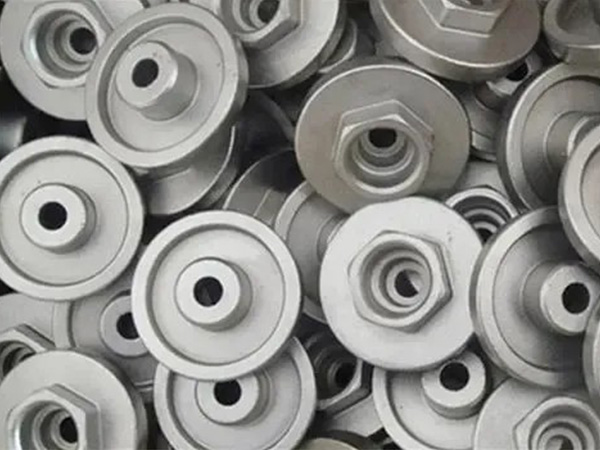What defects are prone to valve castings?

1. Stomata
This is a small cavity formed in the metal by the gas that fails to escape during the solidification process, its inner wall is smooth, contains gas, and has a high reflectivity to ultrasonic waves, but because it is basically spherical or elliptic, that is, a point defect, affecting its reflected amplitude. The pores in the ingot are flattened into area-type defects after forging or rolling, which can be detected by ultrasonic detection.
2. Shrinkage and porosity
When the casting or ingot is cooled and solidified, the volume shrinks, and the cavity defect will be formed in the final solidified part because the liquid metal cannot be supplemented. The large and concentrated void is called the shrinkage hole, and the small and dispersed void is called the loose, they are generally located in the center of the final solidified part of the ingot or casting, and the inner wall is rough, surrounded by many impurities and small pores. Due to the law of thermal expansion and cold contraction, shrinkage holes are bound to exist, but with different processing methods and different shapes, sizes and positions, when it is extended to the casting or ingot body becomes a defect. Ingot in the blank forging if the shrinkage hole is not cut clean and into the forging become residual shrinkage hole (shrinkage hole residual, residual shrinkage pipe).
3. Slag inclusion
The slag or refractory material on the furnace body in the melting process is peeled off into the liquid metal, and is sucked into the casting or ingot body during pouring, forming a slag inclusion defect. Slag inclusion is usually not a single existence, often in a dense state or dispersed at different depths, it is similar to volume defects but often have a certain degree of linearity.
4. Inclusion
The reaction products in the smelting process (such as oxides, sulfides, etc.) - non-metallic inclusion, or the addition of some components of the metal composition is not completely melted and remains to form metal inclusion, such as high-density, high-melting point components - tungsten, molybdenum, etc.
5. Segregation
Segregation in castings or ingot mainly refers to the component segregation formed during the smelting process or the melting process of metal because of the uneven distribution of components, the mechanical properties of the area where segregation exists are different from the mechanical properties of the entire metal matrix, and the difference exceeds the allowable standard range to become a defect.
6. Casting cracks
The crack in the casting is mainly caused by the shrinkage stress of the metal cooling and solidification exceeds the ultimate strength of the material, which is related to the shape design of the casting and the casting process, and is also related to the cracking sensitivity caused by the high content of some impurities in the metal material (such as hot brittleness when the sulfur content is high, cold brittleness when the phosphorus content is high, etc.). There will also be an axial intergranular crack in the ingot, and if it cannot be forged in the subsequent open forging, it will remain in the forging and become an internal crack in the forging.
7. Cold insulation
This is a special layered defect in the casting, mainly related to the casting process design, it is in the pouring of liquid metal, due to splashing, turning waves, pouring interruption, or two (or more) strands of metal flow from different directions meet and other reasons, because the liquid metal surface cooling formed by the semi-solid film to remain in the body of the casting and form a diaphragm-like area defect.
8. Turn the skin
This is a layered (area type) defect formed when the liquid metal surface of the first pouring is rapidly cooled in the air to form an oxide film, and the newly poured liquid metal breaks through and turns into the ingot body when continuing to pour, which cannot be eliminated by forging in the subsequent ingot opening forging.
9. Anisotropy
When castings or ingot are cooled and solidified, the cooling speed from the surface to the center is different, so different crystalline structures will be formed, which is manifested as the anisotropy of mechanical properties, and also leads to the anisotropy of acoustic properties, that is, there are different sound speeds and sound attenuation from the center to the surface. The existence of this anisotropy will have an adverse effect on the size and position of defects in ultrasonic inspection of castings.









 +86-021-67895388
+86-021-67895388 shghfmc@163.com
shghfmc@163.com  93862333
93862333